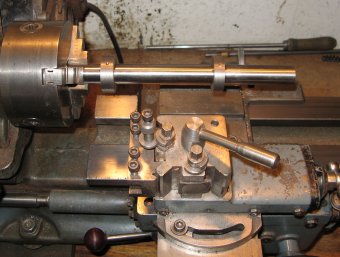- Joined
- Nov 23, 2011
- Messages
- 105
I have an old Atlas 10" Pic O Matic lathe that cuts on a taper along the length of a shaft. I've tried correcting this by leveling the lathe but it doesn't seem to help. On a 3" long work piece there is about .006 difference from one end of the cut to the other. The larger diameter being closest to the chuck slightly tapering smaller to the other end of the piece. The far end is not supported so it isn't tailstock alignment issues.
Is there any adjustment for the headstock for alignment along the length of the lathe? I don't see anything I would consider adjustments. If there are none, what's the procedure for getting this back in alignment? This is an old lathe and isn't what I'd call great condition but it's what I have and I want to get it working as well as I can.
Thanks in advance for any help.
Dan
Is there any adjustment for the headstock for alignment along the length of the lathe? I don't see anything I would consider adjustments. If there are none, what's the procedure for getting this back in alignment? This is an old lathe and isn't what I'd call great condition but it's what I have and I want to get it working as well as I can.
Thanks in advance for any help.
Dan


